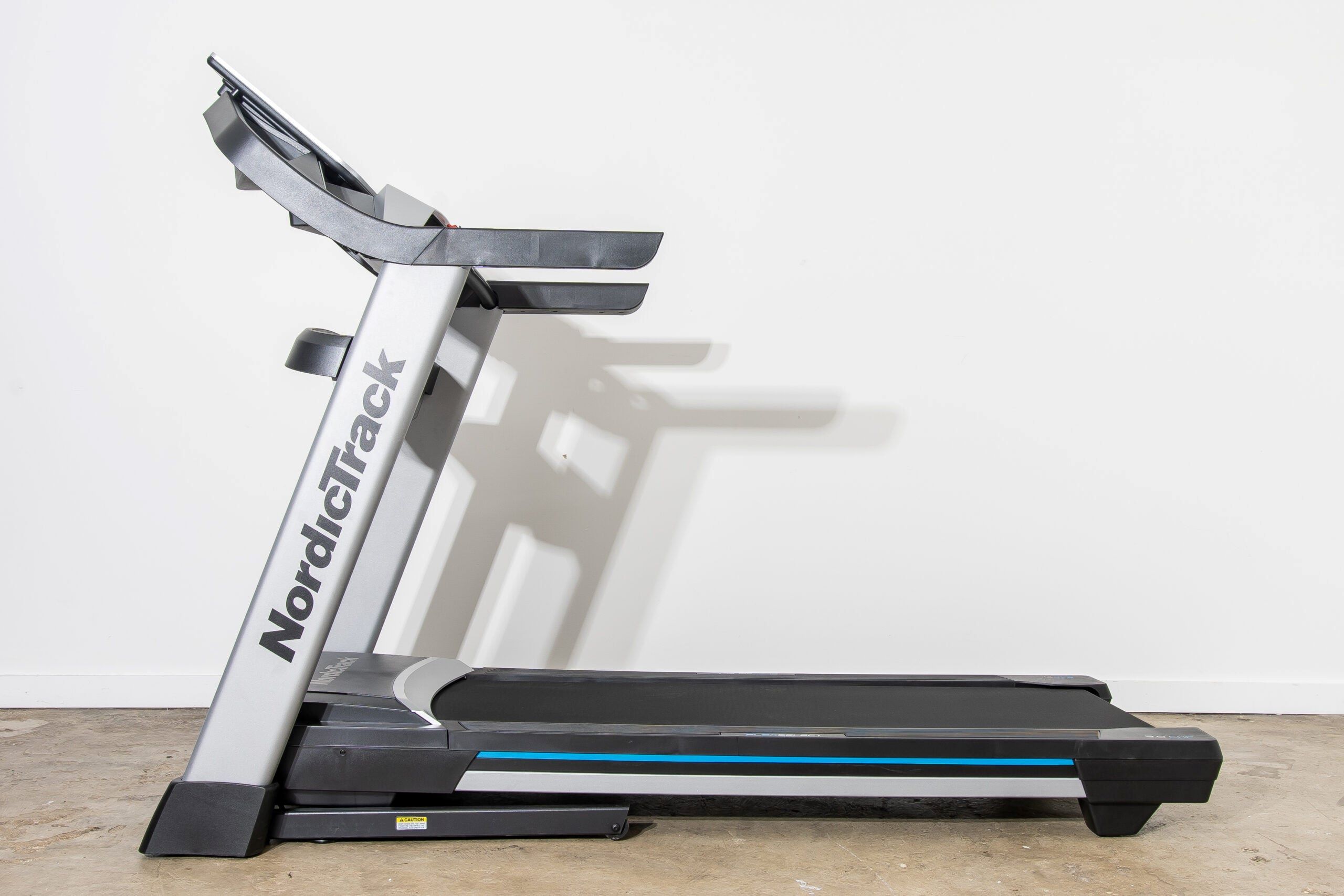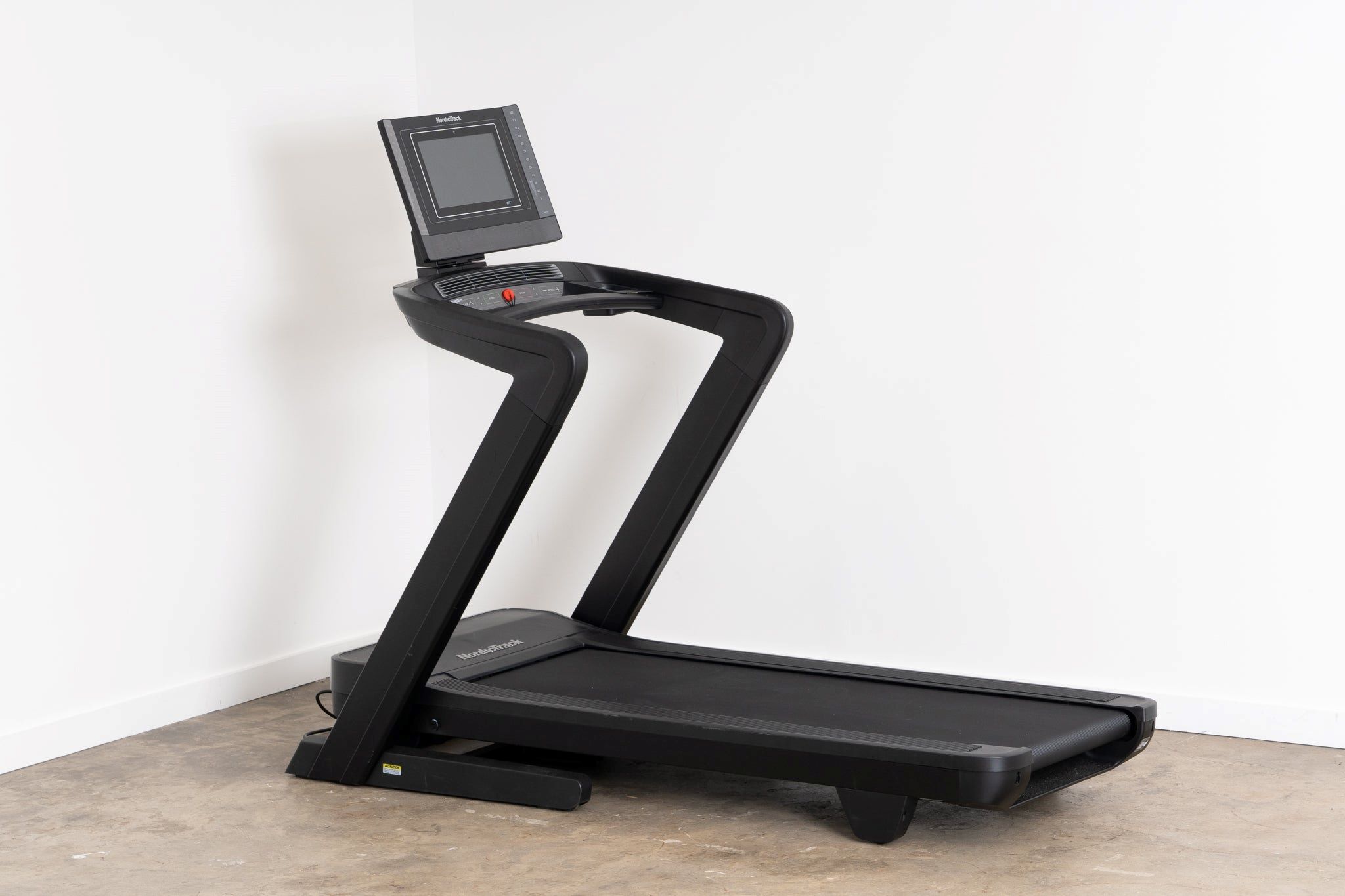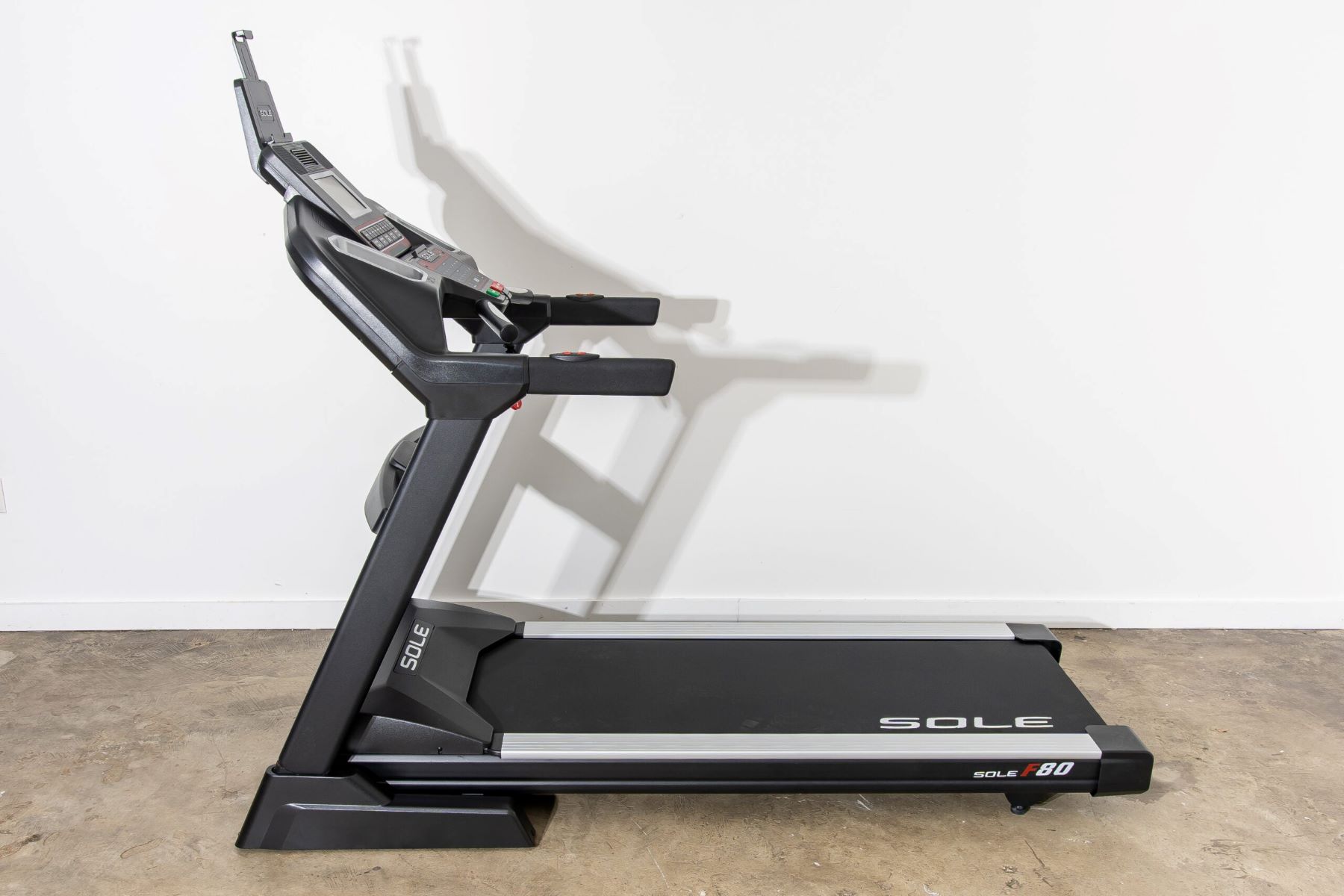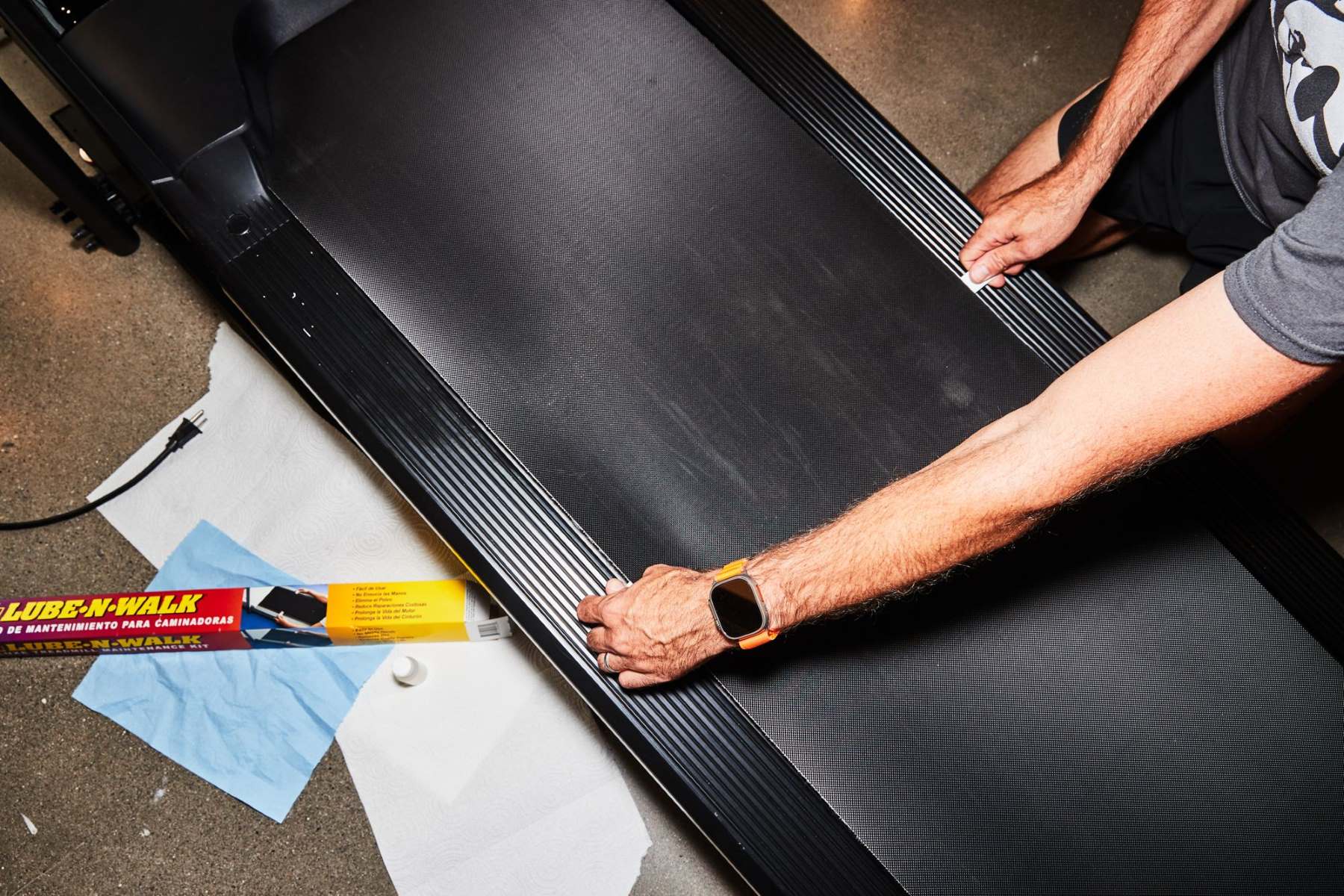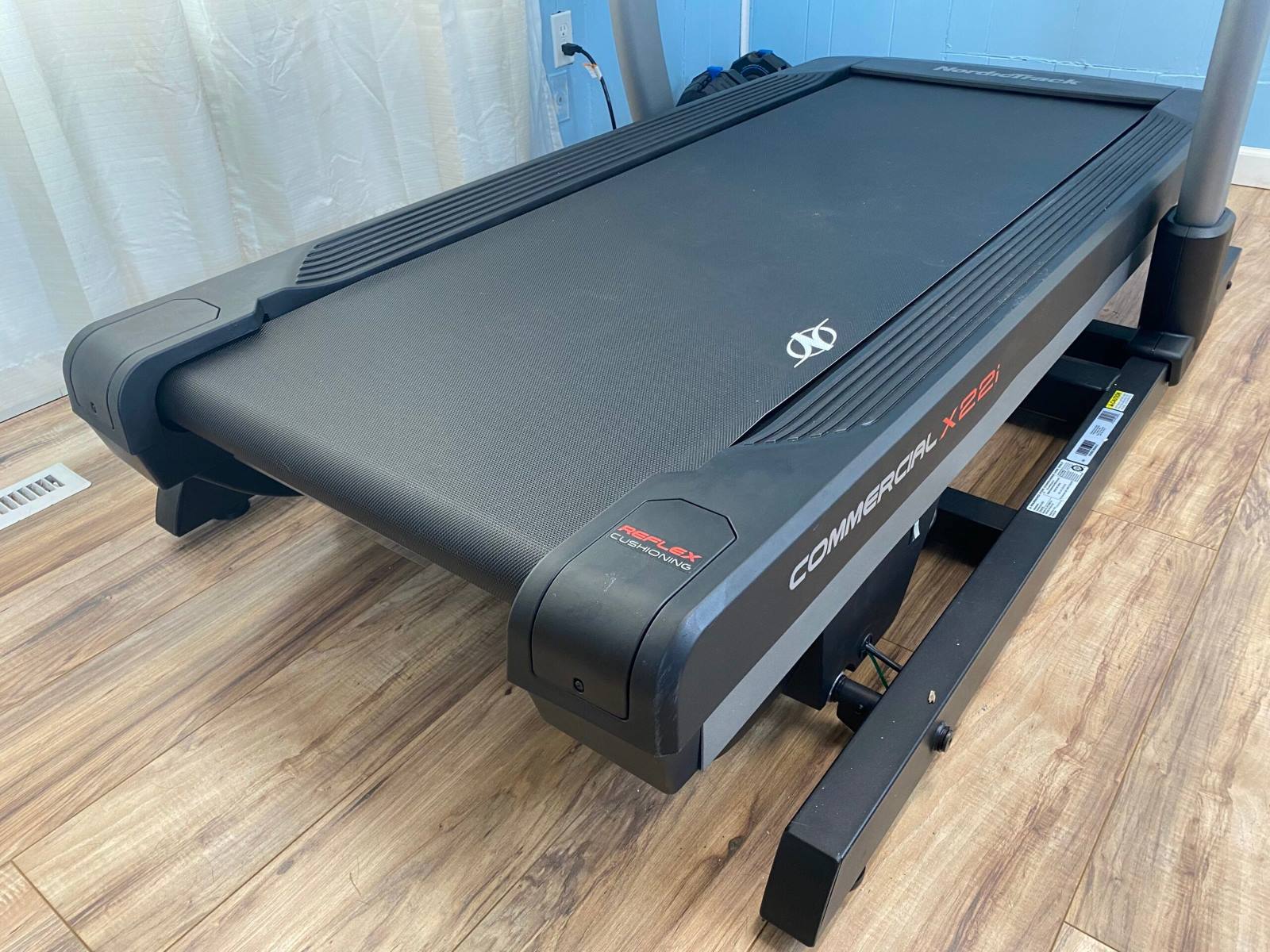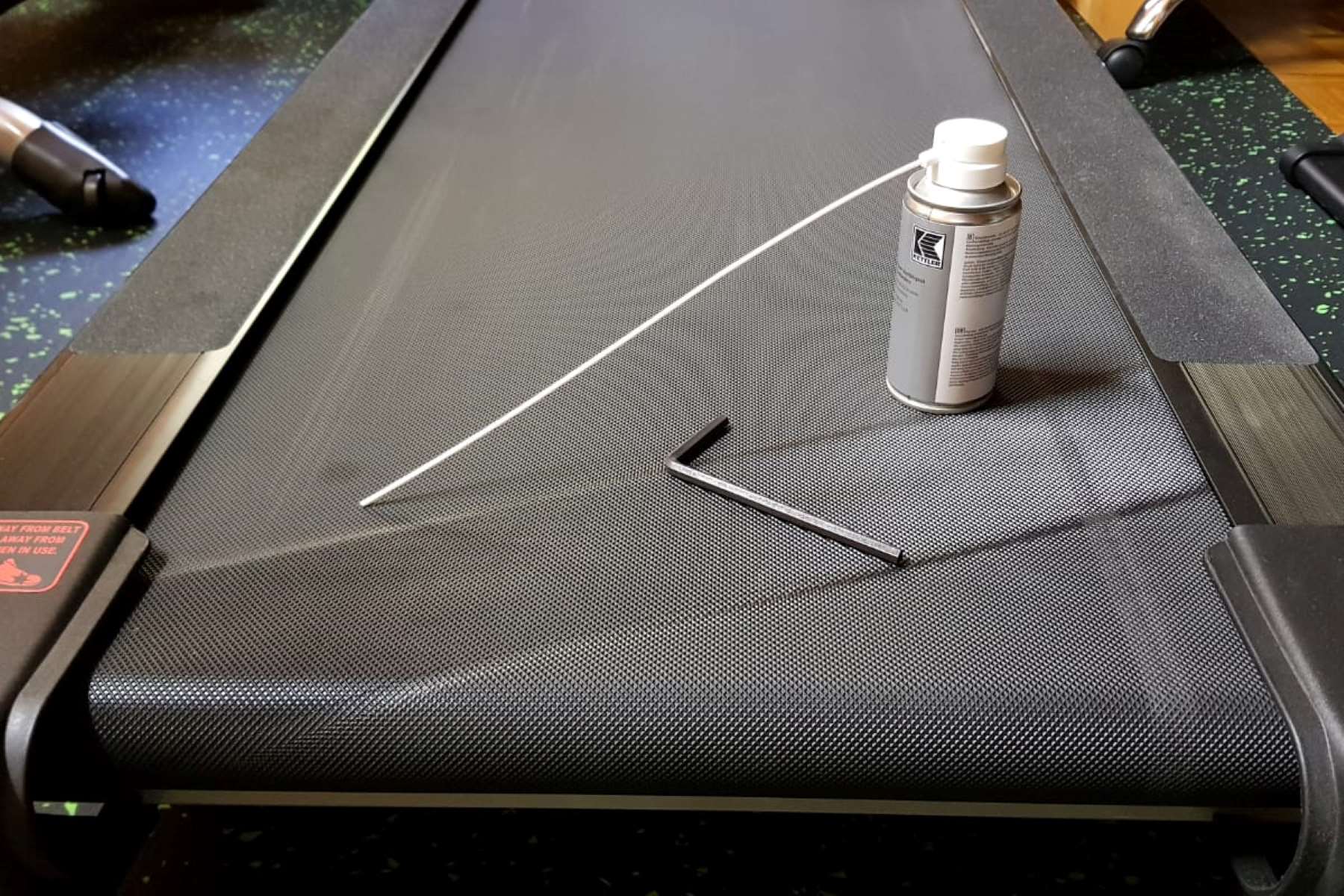

Featured
How Do You Lubricate Your Treadmill
Modified: August 19, 2023
Learn how to properly lubricate your treadmill with our featured guide. Keep your machine running smoothly and extend its lifespan with these essential tips.
Introduction
Welcome to this comprehensive guide on how to properly lubricate your treadmill. Whether you’re a seasoned runner or just starting out on your fitness journey, maintaining your treadmill is essential for optimal performance and longevity.
A well-lubricated treadmill not only ensures smooth and quiet operation but also reduces wear and tear on the components, minimizing the risk of costly repairs down the line. By following the proper lubrication procedures, you can extend the lifespan of your treadmill and enhance your workout experience.
In this article, we will delve into the importance of lubricating your treadmill, discuss different types of lubricants suitable for treadmills, provide a step-by-step guide on how to lubricate your treadmill, highlight common mistakes to avoid, and offer tips for maintaining your treadmill’s lubrication.
So, whether you’re a fitness enthusiast who uses your treadmill daily or someone who occasionally hops on for a quick run, read on to learn the best practices for lubricating your treadmill and keeping it running smoothly.
Why is lubricating your treadmill important?
Lubricating your treadmill is a crucial maintenance task that should not be overlooked. Here are some key reasons why lubrication is important:
- Reduced friction: Friction between the various moving parts of a treadmill can lead to increased wear and tear. By lubricating the belt, deck, and rollers, you can significantly reduce friction, ensuring smooth and efficient operation.
- Quieter operation: A well-lubricated treadmill operates silently, providing a more pleasant and peaceful workout environment. Without proper lubrication, the treadmill may start to squeak or make other noises that can be distracting and disruptive.
- Prevents overheating: Friction can generate heat, potentially causing the motor and other components to overheat. Lubrication minimizes the heat buildup, helping to prevent excessive wear, damage, and even potential safety hazards.
- Preserves belt and deck integrity: Proper lubrication prevents the belt from drying out and cracking, extending its lifespan. It also protects the deck from excessive friction, reducing the risk of damage and costly repairs.
- Smoother workouts: When the treadmill is well-lubricated, you’ll experience a smoother and more comfortable workout. The belt will glide effortlessly, allowing you to focus on your fitness goals without any interruptions or discomfort.
Regularly lubricating your treadmill is vital to maintain its performance, protect its components, and ensure your safety during workouts. Neglecting this important maintenance step can lead to premature wear and tear, decreased performance, and potential safety hazards. By prioritizing proper lubrication, you can extend the lifespan of your treadmill and enjoy hassle-free workouts for years to come.
Different types of lubricants for treadmills
When it comes to lubricating your treadmill, it’s crucial to choose the right type of lubricant. Here are three common types of lubricants that are suitable for treadmills:
- Silicone-based lubricants: Silicone-based lubricants are the most widely recommended lubricants for treadmills. They provide excellent lubrication, reduce friction, and are long-lasting. Silicone lubricants are also less likely to attract dust and debris, keeping your treadmill cleaner. Moreover, they have a wide temperature range, making them suitable for different climates. It’s important to note that silicone-based lubricants are not the same as silicone sprays used for household purposes and should be specifically designed for treadmill belts and decks.
- Teflon-based lubricants: Teflon-based lubricants, also known as PTFE lubricants, are another popular choice for treadmill lubrication. Like silicone-based lubricants, they offer smooth and quiet operation. Teflon lubricants have excellent anti-friction properties and can withstand high temperatures. However, they may require more frequent application compared to silicone lubricants.
- Wax-based lubricants: Wax-based lubricants, typically in solid form, are also an option for treadmill lubrication. These lubricants come in stick or bar form and are applied directly to the belt and deck. They provide good lubrication and are known for their cleanliness, as they do not attract dust or dirt. However, wax-based lubricants may need more frequent application due to their lower longevity.
It’s important to follow the manufacturer’s recommendations when selecting a lubricant for your specific treadmill model. Some treadmill manufacturers even offer their own branded lubricants, which are formulated to work best with their machines. Avoid using household oils, such as WD-40, as they can cause damage and may void your treadmill’s warranty.
Remember, choosing the right lubricant is essential to ensure proper maintenance and optimal performance for your treadmill. Regularly check your treadmill’s user manual or consult the manufacturer for guidance on the recommended lubricant type and application frequency.
Step-by-step guide to lubricating your treadmill
Properly lubricating your treadmill is a straightforward process that requires a few simple steps. Here’s a step-by-step guide to help you through the process:
- Consult your treadmill’s user manual: Start by referring to your treadmill’s user manual or manufacturer’s guidelines. They will provide specific information on the recommended lubricant type and application method for your particular treadmill model.
- Prepare the treadmill: Before applying the lubricant, ensure that the treadmill is turned off and unplugged from the power source. This will prevent any accidental injuries during the lubrication process.
- Clean the treadmill: Use a clean, dry cloth to wipe down the treadmill’s belt, deck, and rollers. Remove any dirt, dust, or debris that may have accumulated on the surfaces. This step is crucial to ensure optimal lubrication and prevent any particles from getting trapped between the belt and deck.
- Apply the lubricant: Depending on the type of lubricant you’re using, follow the manufacturer’s instructions for application. Most treadmill lubricants come in a squeeze bottle or applicator, making it easy to apply the lubricant evenly across the width of the belt. Apply the lubricant sparingly, avoiding excessive amounts that may cause dripping or pooling.
- Distribute the lubricant: After applying the lubricant, turn on the treadmill and let it run at a slow speed for a few minutes. This will help distribute the lubricant evenly along the belt and deck. Monitor the belt to ensure smooth movement and proper lubrication.
- Clean up any excess lubricant: Use a clean cloth or paper towel to wipe off any excess lubricant from the belt and deck. This will prevent it from attracting dust and dirt during future workouts.
- Regular maintenance: Establish a regular maintenance schedule for lubricating your treadmill. The frequency of lubrication will depend on the intensity and frequency of your treadmill use. Typically, lubrication is recommended every three to six months, but consult your treadmill’s user manual for specific guidelines.
By following these steps and maintaining a consistent lubrication routine, you can ensure optimal performance and longevity for your treadmill.
Common mistakes to avoid while lubricating your treadmill
While lubricating your treadmill is a relatively simple task, there are some common mistakes that you should avoid to ensure proper lubrication and prevent potential damage to your machine. Here are a few mistakes to steer clear of:
- Using the wrong lubricant: One of the most significant mistakes is using an inappropriate lubricant for your treadmill. It’s crucial to use a lubricant specifically designed for treadmills and follow the manufacturer’s recommendations. Using household oils or silicone sprays not intended for treadmill use can cause damage and can void your warranty.
- Over-lubricating: Applying too much lubricant is another common mistake. Excessive lubrication can lead to a slippery surface, causing the belt to slip and compromising your safety. It can also attract more dust and dirt, leading to clogging and potential damage to the machine.
- Under-lubricating: On the other hand, under-lubricating can also have adverse effects. Insufficient lubrication can result in increased friction, causing excessive wear and tear on the belt and deck. Follow the manufacturer’s guidelines for the appropriate amount of lubricant to apply to achieve optimal performance.
- Not cleaning the treadmill before lubrication: Failing to clean the treadmill’s belt, deck, and rollers before lubrication can hinder the effectiveness of the lubricant. Dust, debris, and sweat can accumulate over time, preventing the lubricant from properly reaching the necessary areas. Make sure to wipe down the surfaces to ensure a clean and smooth application.
- Ignoring the manufacturer’s instructions: Every treadmill model may have specific lubrication requirements. It’s vital to carefully read and follow the manufacturer’s instructions and recommendations for lubrication. This will ensure that you are using the correct lubricant, applying it correctly, and maintaining the warranty coverage.
- Neglecting regular maintenance: Regular maintenance is essential for keeping your treadmill in optimal condition. Lubrication is just one aspect of treadmill maintenance. Ignoring other maintenance tasks, such as belt tension adjustments and cleaning, can lead to decreased performance and potential issues down the line.
By avoiding these common mistakes and adopting proper lubrication practices, you can maintain the performance, durability, and safety of your treadmill, prolonging its lifespan and enhancing your workout experience.
Tips for maintaining your treadmill’s lubrication
Maintaining your treadmill’s lubrication is vital for its performance and longevity. Here are some essential tips to help you keep your treadmill properly lubricated:
- Follow the manufacturer’s guidelines: Always refer to the manufacturer’s recommendations for lubrication frequency, type of lubricant, and application method. Each treadmill model may have specific requirements, so it’s important to adhere to the guidelines provided in the user manual.
- Monitor the belt’s condition: Regularly inspect the condition of the treadmill belt. If you notice any signs of excessive wear, fraying, or roughness, it may be time to replace the belt or seek professional assistance. A worn-out belt can hinder proper lubrication and affect your workout experience.
- Wipe down the treadmill after each use: Clean the surfaces of your treadmill, including the belt, deck, and rollers, after each use. This will help prevent dust and debris from accumulating and potentially interfering with the lubrication. Use a clean, dry cloth or towel to wipe away any sweat or dirt.
- Keep the area around the treadmill clean: It’s important to maintain a clean environment around your treadmill. Dust and dirt particles can make their way onto the belt and deck, hampering the lubrication process. Regularly vacuum or sweep the floor around your treadmill to minimize dust accumulation.
- Reapply lubricant when necessary: Even with regular lubrication, you may need to reapply the lubricant sooner depending on the frequency and intensity of your treadmill use. If you notice increased friction, noise, or a lack of smoothness, it may be a sign that your treadmill needs another round of lubrication.
- Keep track of maintenance schedule: Establish a maintenance schedule for your treadmill, including regular lubrication. Mark it on your calendar or set a reminder to ensure that you don’t forget this crucial maintenance task. Consistency is key to keeping your treadmill in optimal condition.
- Consider professional servicing: If you’re unsure about how to properly lubricate your treadmill or notice any significant issues, it’s advisable to contact a professional service technician. They can inspect your treadmill, recommend the appropriate lubrication schedule, and address any other maintenance or repair needs.
By following these maintenance tips, you can ensure that your treadmill’s lubrication is consistently maintained, allowing for smooth and effective workouts and extending the lifespan of your machine.
Conclusion
Lubricating your treadmill is a crucial aspect of treadmill maintenance that should not be overlooked. By taking the time to properly lubricate your treadmill, you can enjoy smooth, quiet, and efficient workouts while extending the lifespan of your machine. A well-lubricated treadmill reduces friction, prevents overheating, and preserves the integrity of the belt and deck.
When lubricating your treadmill, be sure to choose the right type of lubricant recommended by the manufacturer or outlined in the user manual. Avoid common mistakes such as over-lubricating, under-lubricating, using the wrong lubricant, and neglecting regular maintenance. These mistakes can compromise the performance of your treadmill and potentially lead to costly repairs.
Follow the step-by-step guide provided in this article to ensure proper lubrication. Clean your treadmill before applying the lubricant, use the recommended amount, and distribute it evenly. Additionally, regularly clean your treadmill, monitor the belt’s condition, and stay consistent with your maintenance schedule.
By maintaining your treadmill’s lubrication and following the manufacturer’s guidelines, you can optimize your workouts, prevent unnecessary wear and tear, and avoid potential safety hazards. A well-maintained treadmill will continue to support your fitness goals and provide a smooth and enjoyable exercise experience for years to come.


